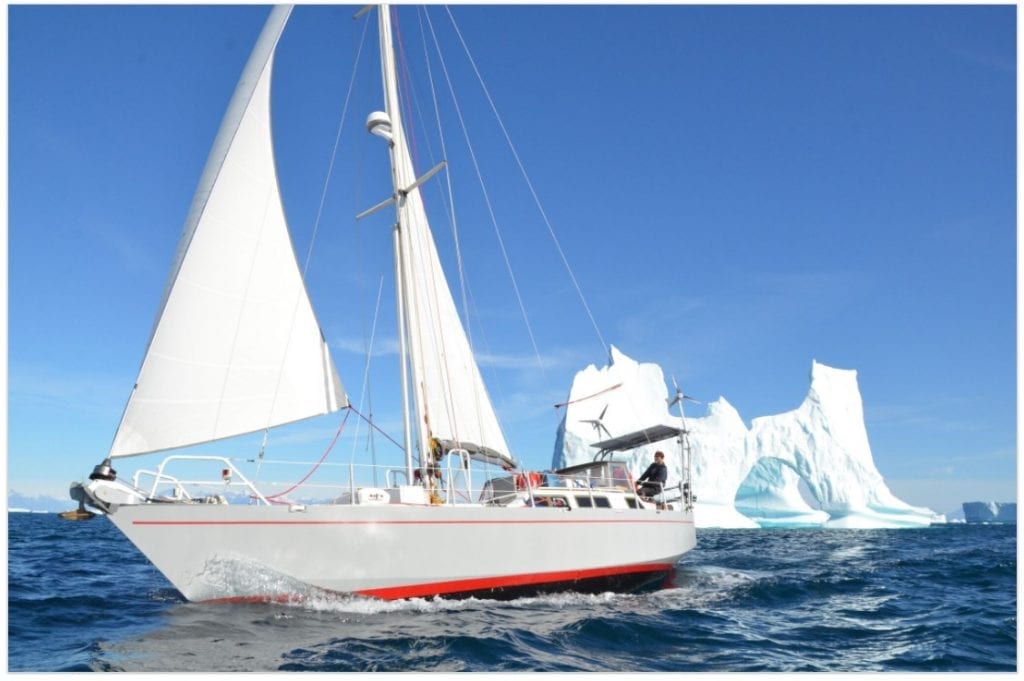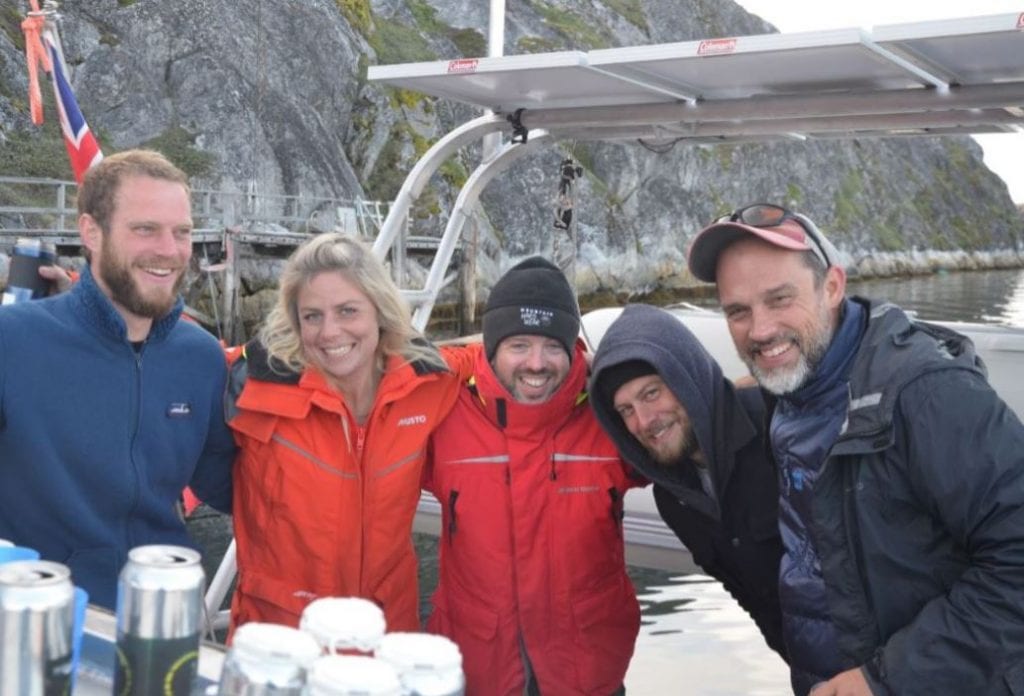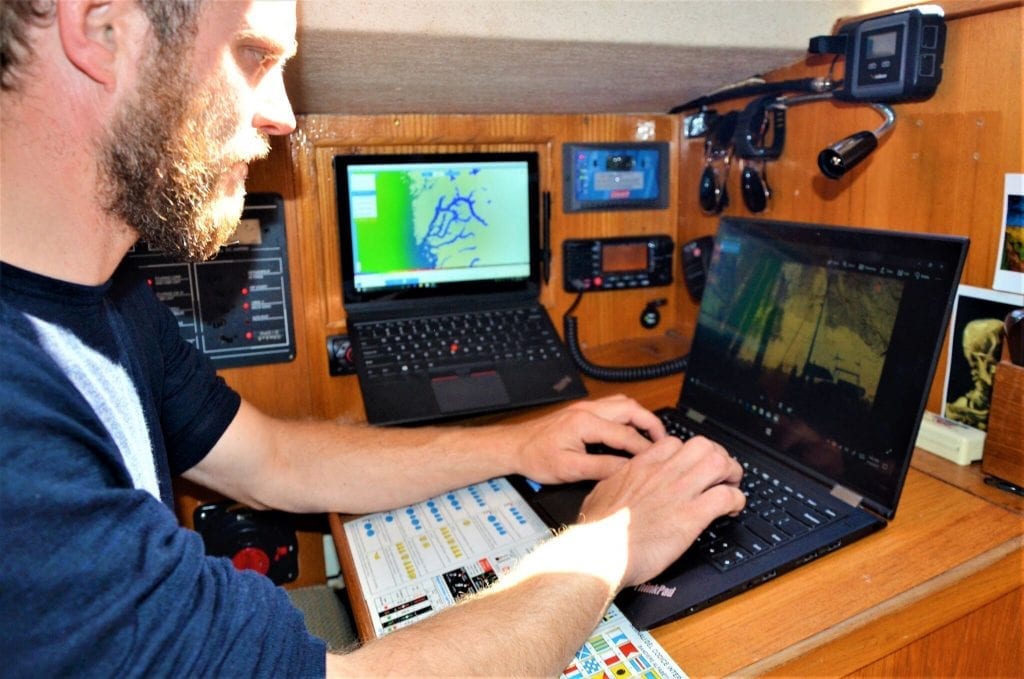Q&A with Nicholas Peissel, Expedition Lead, Mission Arctic
Boldly going where few have gone before, the Mission Arctic extreme expedition is on the fast track to transforming the world—and when we heard about their ecological adventure through Arctic Waters, we had to get involved. We had the opportunity to provide some of the technology necessary to support this epic journey, equipping the team members with Think laptops and tablets to help guide their epic excursion.

Arctic scientists, researchers, filmmakers and polar explorers Nick Peissel, Gareth Carr, Dr. Dan Carlson, Will Turner and Dr.Pippa Pett combined their interests to plan this adventurous trip in late June that’s already been filled with surprises and discoveries. They’re on a tri-fold mission: to search for the northernmost woolly mammoth remains in North America, conduct meaningful glacier and iceberg science for the Arctic Research Center, and document pre-Inuit archaeological sites and lost remnants of several historical expeditions. Lenovo ThinkPad laptops are the engine powering their success and the crew members’ safety. Equipped with Lenovo ThinkPad laptops and tablets, the team collects and interprets scientific data, navigates the Arctic waters and the ice safely, edits all drone and remotely operated vehicles (ROV) footage, creates 3D images, and communicates with the outside world.
We caught up with the crew while they’re exploring uncharted waters, which we’ll be sharing as a series of Q&A posts over the next several weeks. Each piece features a different crew member and how they’ve adapted to living and working in the Arctic.
This week we’re chatting with Nick Peissel, Mission Arctic’s lead expedition member:
Q: What is Mission Arctic?
Nick Peissel: Mission Arctic is an expedition into the melting Arctic to conduct scientific research and reveal hidden secrets that have been under ice for a millennium. Sailing into the heart of this melt on a 43- foot custom expedition yacht, a team of passionate scientists, researchers, filmmakers and polar explorers will undertake an eco-expedition—which has never been attempted—to research and discover unexplored stretches and newly-exposed waterways of the rapidly melting Arctic environment. During our time on board, we’ll examine the impacts and implications of the Arctic thaw on our planet and people, including how melting ice is impacting the mixing effect that drives global ocean currents, track the movements of icebergs, measure the physical properties of the ocean and conduct surveys of the sea ice while pushing into uncharted waters.
Q: How did you get involved with the expedition? What sparked your interest in becoming a crew member?
NP: As the mission leader and architect, I became involved in Arctic Exploration quite by mistake around 2010. While planning an expedition to the polar regions I started to study the first satellite ice images from the 1970s to present and noticed some shocking changes. I designed an expedition to highlight the impacts and implications of climate change and sailed a route that had never been accomplished before – and that many had died attempting. Since then, Mission Arctic has developed into a more academic and research based initiative with just the right amount of extreme exploration to keep us all interested and our audience captivated. We now have an extensive team of researchers, historians, biologists and archaeologists supporting and taking part in our expeditions, which serve as a free platform for research to areas that are extremely difficult to reach or never been reached before by water.

Q: What makes technology so important to the success of the expedition?
NP: Thousands have given their lives in the name of Arctic exploration and research. Today, things have changed and we have a much better understanding of the region and tools to more safely navigate and research it. GPS is very important to track your location and safely navigate the shoals and rocks in more visited areas of the polar North. We also use drones to fly ahead to look for ice or find clear passages through the ice so that we can navigate it safely. We often task satellites to take custom photos for us so that we can track ice conditions to see if it is possible to pass through these ice packed regions. We use a large amount of scientific equipment, drones and remotely operated vehicles (ROV) to undertake our research and, of course, satellite communications to transmit all the information we collect and share our stories with others. At the center of this are the Lenovo ThinkPad laptops we use to: collect and interpret scientific data; navigate these waters and the ice safely; edit all our drone and ROV footage and create 3D images; make media pieces to share our stories; and communicate with the public. All this technology allows us to push the boundaries of exploration and research to further our understanding of the planet in a way we could never do before.

Q: Can you share a bit of how the expedition is going so far?
NP: Every expedition is full of highs and lows, successes and disappointments. So far, the highs outweigh the lows. The research is going well. We have reached several unsurveyed fjords and conducted some interesting research up and down their different arms. Pushing through thick ice to try and reach a towering marine terminating glacier is always a rush. The beautiful scenery and experiences we have lived to this point, the achievement of sailing well beyond the Arctic circle, and the feeling of exploration and discovery that comes with every new area we push into is fantastic. Every day is a mixture of science and adventure as we push through uncharted waters to research these newly exposed areas.
Q5: What will Mission Arctic do with the insights gained from this expedition?
NP: The mass amount of scientific data collected from the buoys we retrieve and surveys we undertake will be brought back to the Arctic Research Center for further analysis and interpretation. Hopefully the information will shed more light on why and how Arctic sea ice and polar ice cap depletion are taking place and inform the direction of future research. We hope to mix science with extreme exploration to reach a larger audience with messaging about our planet.
Q6: What are you most looking forward to in the months ahead?
NP: The remaining trip up the coast of Greenland and into the high latitudes of the Canadian Arctic promises to be spectacular in many ways and there are some important research areas and moorings we hope to reach to complete our data collection. Pushing into areas that have only ever been accessed by dog sled and helicopters is something very exciting and scary for all of us as you have no idea what to expect in these ice-packed and uncharted waters. Most exciting of all is the feeling of exploration and discovery in a land and sea which constantly presents new challenges.
Be sure to check back for Q&As with the rest of the Mission Arctic crew. You can also follow the adventures Mission Arctic on @LenovoPress, @MissionArctic and Mission Arctic’s website over the next few weeks for more updates about wooly mammoth remains, the missing body of 1915-1916 explorer Peter Bernard, lost expedition sites, hidden treasures, climate change, and more as this expedition continues.
Tags
mission arctic; arctic research center; think pc; expedition
